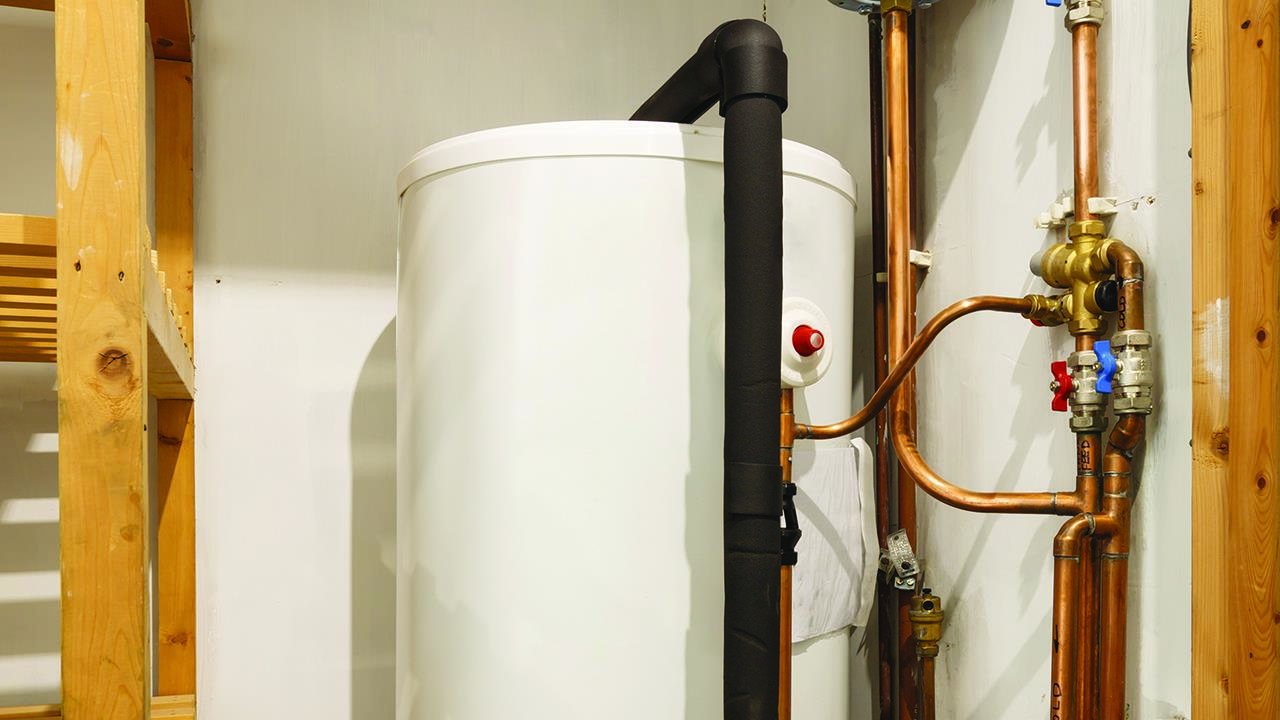

The government’s Ten Point Plan for a Green Industrial Revolution outlined an ambitious target to install 600,000 heat pumps in UK homes, each year by 2028, the use of which will generally also require a cylinder.
Hot water cylinders can act as a ‘battery’ for the home by allowing for large quantities of heated water to be stored and made available for both immediate and later use.
As installation numbers increase, it is important that engineers fully understand both the safety and control components of a cylinder system.
Regulation
Building Regulations Part G, particularly Section G3, sets out the legislative requirements for the installation of a cylinder within a domestic setting, and must be followed to ensure a safe install.
The document, which has been approved by the Secretary of State, stipulates: “(…) hot water storage systems should incorporate (…) an appropriate safety device, for example, a temperature relief valve or a combined temperature and pressure relief valve to safely discharge the water in the event of significant overheating.”
By clearly stating that a safety control valve is needed as a precaution against overheating, the guidance is explicitly informing us that hot water storage cylinders (HWSCs) need to be fitted with compliance at the forefront.
Safety control valves
On a cylinder, an engineer is likely to find an inlet control valve, which is specifically designed for use on an unvented system to control the incoming water supply. The inlet control valves are ‘functional controls’, due to their role in protecting the mains water supply from contamination, and the cylinder from over-pressure.
The inlet control valve combines three key components: pressure reducing valves (PRVs), single check valves (SCVs), and expansion relief valves (safety valves). Each of these components play a key role in ensuring that the end-user is protected and the cylinder remains operational.
PRVs, for example, are designed to reduce water pressure and maintain it to a set level, preventing damage to those components installed downstream from it, most importantly the cylinder itself.
The SCV, as an element of control, prevents both backflow and back siphonage of fluid category 2, and therefore contamination of the mains water supply.
The expansion relief valve, as another element of control and prevention, enables water to be discharged out of the system in the event that pressure reaches the maximum set limit. Overall, this prevents the pressure of the system from reaching levels that would be dangerous for the hot water storage cylinder and the components in the system.
Additional control and safety methods
Considering that the inlet control valves are ‘functional controls’, there are additional components which can further the overall safety of the end-user.
Safety controls are a requirement on cylinder systems to prevent the temperature in the cylinder from exceeding 99°C. They consist of a dual cylinder thermostat, and temperature and pressure relief valves.
The dual cylinder thermostat offers fail-safe protection, which comes into use when the HWSC exceeds two set points. These set points consist of ‘manual temperature control’, which is set by the user or engineer and is usually set to 55-65ºC, and a ‘high limit cut-off’, which comes pre-set at 80ºC.
The control and high limit thermostats are usually supplied in one single housing, known as a dual stat, although on occasions they may be supplied as individual units.
Heat pumps (and some boilers) have their own probes to monitor and control the water temperature inside the cylinder. Here it may be that only a single high limit thermostat is supplied for installation into a bespoke pocket on the cylinder.
The purpose of the limit stat is to meet a safety aspect of Building Regulation G3, which requires: “a non self-resetting energy cut-out to disconnect the supply of heat to the storage vessel in the event of the storage vessel overheating.”
The usual procedure here, upon activation of the high limit stat power, is a cut to the two-port hot water valve which then closes, isolating the storage cylinder from the heat source.
To comply with the above, excess temperature created from a faulty immersion heater is similarly controlled via a non self-resetting thermostat within the immersion heater.
The temperature and pressure relief valves are the final safety measures for the control and limitation of temperature and pressure to the water stored in the cylinder.
They work to prevent the water from reaching 100ºC. If a set condition of temperature or pressure is reached, the valves will discharge enough water out of the system to ensure that it returns within its operating limits, thus ensuring the safety of residents.
The future of heating systems
While all of the controls reviewed play their part in ensuring a safe install, new technologies are being developed that, with the use of smart controls, can only help to enhance and gain a greater performance from the cylinder.
These new technologies cover anything from smart immersions, alarms to identify discharges, control of temperatures within the cylinder to help eliminate legionella, lowering of discharge temperatures for enhanced safety, and many more. These innovations will no doubt play a big part in the next generation of G3-compliant controls.
If you'd like to keep up-to-date with the latest developments in the heating and plumbing industry, why not subscribe to our weekly newsletters? Just click the button below and you can ensure all the latest industry news and new product information lands in your inbox every week.